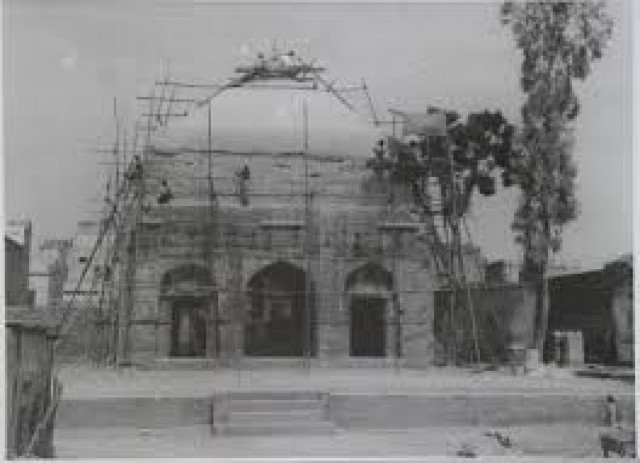Restoring the forgotten Zebun Nisa garden
Use of bricks in Chauburji distinguished its status during Mughal era

SCREENGRAB
Chauburji is a beautiful building made of red stones near Multan Road, Lahore. The renovation of the Chauburji Gate is scheduled to be completed this year.
The building was the gateway to the most prominent and largest among the Mughal gardens, which is attributed to a princess, Zebun Nisa. There are four minarets, each 50 feet high, at this historic city gate and therefore it was named Chauburji.
The garden is thought to have spread from Nawan Kot to the Lahore city centre from the north, but today there are no signs of it.
The Punjab archaeological department’s former director Afzal Khan said that the unique style of architecture seen in Chauburji is a beautiful masterpiece of a mixture of Mughal and ancient Islamic style.
The prestigious status of this historic building is due to its minarets which are not matched by any other building in the subcontinent.
Historians believe that domes were also erected on these minarets, which disappear with time. But no evidence of them has been found in the structure of the monument.
The red bricks used in the monument mark the Islamic style, which is used in several buildings in the subcontinent such as the Lal Qila and the Badshahi Mosque.
During the Mughal era, marble was used in many buildings, but the use of bricks in Chauburji illustrates its distinguished status during that period.
The present building of the Chauburji Gate and the surrounding park covers an area of about three acres. The building, which was built in 1646, was severely damaged by an earthquake in 1843.
The earthquake damaged its northwestern minaret due to which it collapsed. It was rebuilt and restored in the Mughal period.
The reconstruction of the historic building was completed by the Department of Archeology in 1960. The Orange Line project was likely to damage this heritage building as well. However, experts stated that the building has been preserved and its restoration and decoration have begun.
Archaeological Department Director Malik Maqsood said that the reconstruction of the historic building was started two years ago.
Under the project, the work of tiling has been done in different parts of the building and broken bricks have been replaced at several places.
The official said that 80% of the restoration work has been completed while the rest will be completed this year.
He said that the project would cost Rs 44 million and the place will be opened to the public after completion of the work. The PHA has built a beautiful park in the vicinity of the building of Chauburji Gate. The iron fences have been replaced by a boundary wall due to which drug addicts cannot enter the park.
Local people said there was need to preserve the historic building. A citizen, Mohammad Najam, said that the premises had earlier become a home for drug addicts. “We thought when we saw the condition of the building that no one cared, but now we are happy that this building has been renovated,” he said.
A woman, Fatima Ahmed, said that her house is located nearby. “It looks great that the building has been renovated and decorated, especially the family park that has been built here will benefit the local population,” she said.
Highlight: The building, which was built in 1646, was severely damaged by an earthquake in 1843.
Published in The Express Tribune, April 27th, 2020.



















COMMENTS
Comments are moderated and generally will be posted if they are on-topic and not abusive.
For more information, please see our Comments FAQ